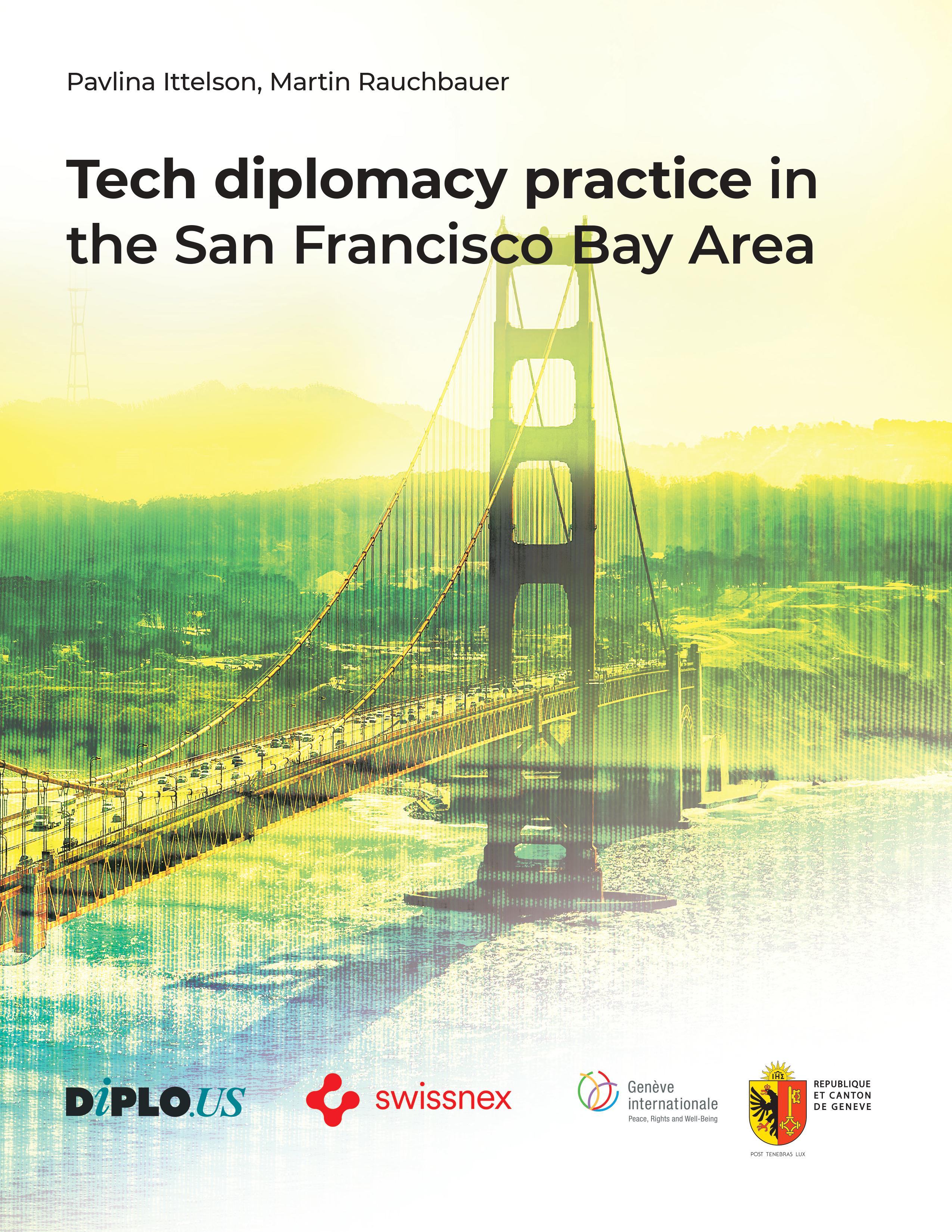Authors: Pavlina Ittelson | Martin Rauchbauer
Tech diplomacy practice in the San Francisco Bay Area
2023
What happens in the San Francisco Bay Area (Bay Area) profoundly impacts the world, both the digital and real. Since 2018, when Diplo’s first report on the interactions of governments and tech companies in Silicon Valley was released, this rings even more true. Whether talking about shifting work and meetings online, geopolitical tensions, supply chain crisis, or the rise of artificial intelligence (AI), tech companies in the Bay Area have an outsized global impact. Issues regarding security, disinformation, democracy and human rights protections, and the future development of individual countries are all impacted by the practices of tech companies in the Bay Area.
Countries are increasingly focused on addressing the digital aspects of foreign policy. The latest developments show a rise in digital issues on the policy agenda (both on national and international levels), the creation of new posts of digital and tech diplomats, as well as the adoption of new policies guiding these efforts. The digital aspects of foreign policy have matured, and conversations between diplomats and tech companies in the Bay Area have moved from economic and innovation issues to democracy, human rights online, security, fintech, the environment, and much more.
This report focuses on tech diplomacy as part of digital diplomacy, the role of the Bay Area, and the ways in which countries engage in the practice of tech diplomacy in the Bay Area. The report also maps a selection of local diplomatic representations to illustrate the variety of approaches by different countries and additionally identifies the main challenges and benefits for both diplomatic representations and tech companies in pursuing the practice of tech diplomacy.
The main premises of the report are that exchanges between diplomatic representations and tech companies in the Bay Area contribute to detecting emerging issues on the diplomatic agenda, as well as open policy dialogue between stakeholders, and allow for informed decision-making for both governments and tech companies. Understanding what is happening on the ground is, therefore, essential, especially for countries that are exploring the possibility of establishing a dedicated tech diplomacy practice.
Table of Contents
1. Introduction
Introduction | Background of this study
2. Tech diplomacy
An umbrella term | Diplomacy between governments and tech companies | Nation-state vs network state
3. Tech diplomacy in digital foreign policy
Structure of tech diplomacy representations
4. USA and the San Francisco Bay Area
Changes in US digital diplomacy | San Francisco Bay Area ecosystem | San-Francisco-Bay-Area-based companies and organisations
5. Tech diplomacy interactions in the San Francisco Bay Area
Denmark | Australia | France | Switzerland | Austria | Canada | Ireland | Japan | Republic of Korea | United Kingdom | Brazil | Norway | Sweden | Italy | European Union
6. Formal and informal tech diplomacy networking
Cyber and Tech Retreat | Freedom Online Coalition (FOC) | Tech Diplomacy Playground Initiative | Technology Diplomacy Network
7. Other hubs of tech diplomacy
Bengaluru, India | Barcelona, Spain | Beijing, China | Geneva, Switzerland
8. Conclusion
1. Introduction
In 2018, Diplo US mapped the interactions between tech companies and diplomats in the San Francisco Bay Area. This updated report maps the interactions five years later, a period that included the COVID-19 pandemic, a shift to online communication, changes in global geopolitics, and the 2021 global supply chain crisis. Tech companies also experienced a great deal of changes: from Elon Musk acquiring Twitter to the fall of Silicon Valley Bank.
The aim of the mapping remains the same: to provide an overview of the ecosystem and modes of interaction between governments and tech companies in the Bay Area, to foster awareness of local dynamics and better exchanges between stakeholders, and to provide an overview of the ecosystem to those who do not have a local presence.
In 2018, interactions in the Bay Area focused on security and served as a ‘playground for activity’. Current interactions deal with more significant issues, i.e. conversations with tech companies are more likely to turn to geopolitical issues and topics on how to best protect democratic values, regulate security and privacy, and estimate the technological potential of malign actors.
Digital diplomacy and tech diplomacy have matured in the past five years. Countries have adopted or are in the process of adopting digital policies and establishing positions that deal with the digital aspects of the international agenda. However, definitions of the terms ‘digital’, ‘cyber’, and ‘tech diplomacy’ remain unclear as countries interpret and use them interchangeably. Unfortunately, there is little academic literature on this topic.
Tech companies have expanded their communication channels to governments – both locally and internationally. This has led to greater exchanges between countries and tech companies and has expanded the range of issues being addressed, which now include disinformation, environmental tech, fintech, and quantum computing. Today, interactions between tech companies and governments are not confined to certain localities or capitals. The gravity has shifted to online communication and has dispersed to more locations, putting an emphasis on the right channels to address tech diplomacy matters.
Through interviews with 37 tech diplomacy practitioners and their counterparts in tech companies, and extensive desk research, this report aims to shed light on the position of tech diplomacy in the practice of diplomacy, the current models of practice in the Bay Area, and their main challenges and benefits. The report also looks into additional tech diplomacy hubs.



